Lajos Batthyány was executed on 6 October 1849 and buried secretly. Following the Austro-Hungarian Compromise, calls to rebury the prime minister surfaced, but these caused almost insurmountable political and protocol problems. After the compromise, those that took part in the retaliation of 1849 and its victims still remembered the dark days of the past in 1870.
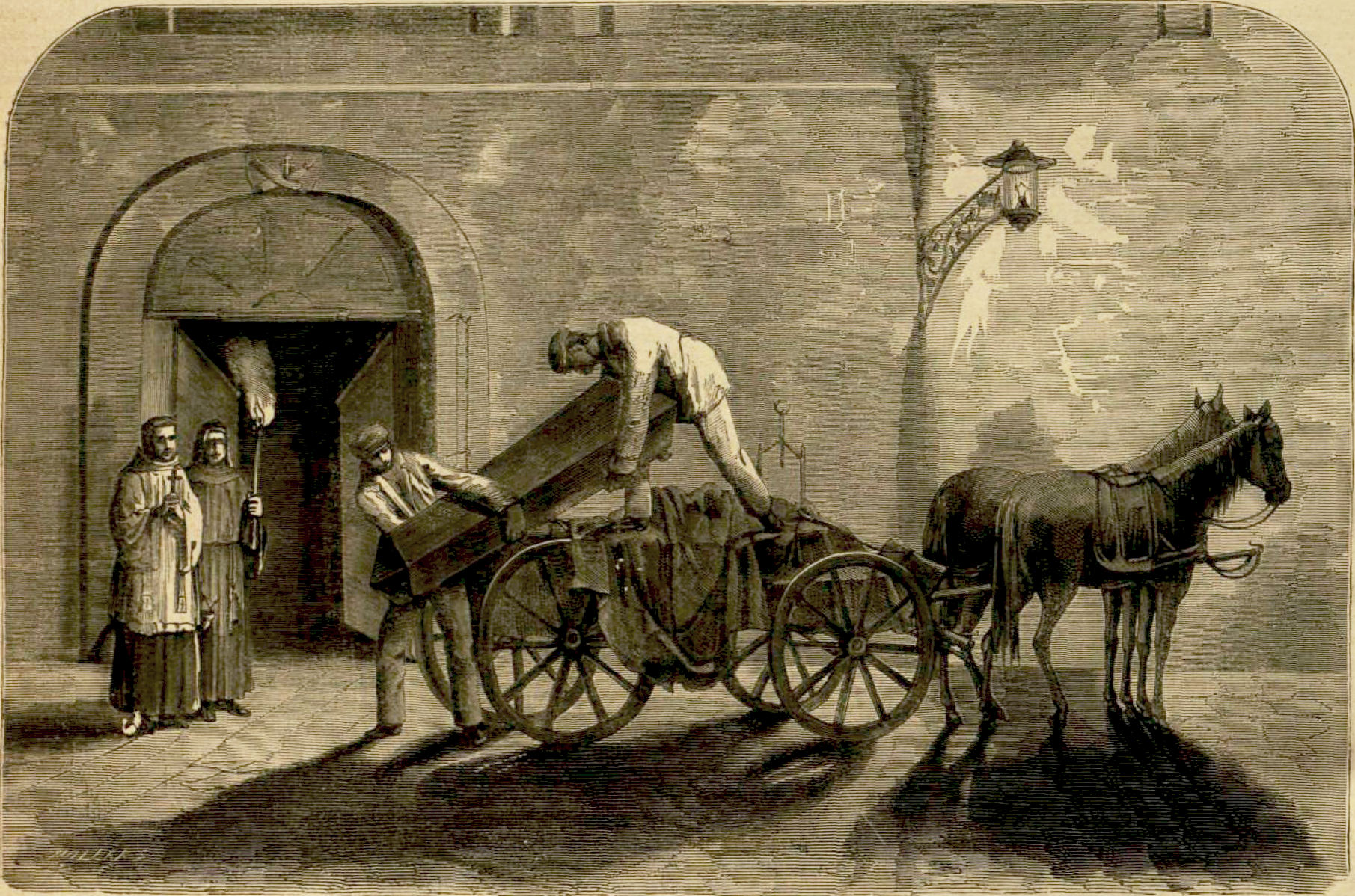
The Secret Funeral in 1849, on the drawing of the Vasárnapi Ujság (Source: Vasárnapi Ujság, 5 June 1870)
There was the problem of the ruler himself, Franz Joseph, who was forced to tolerate the crown being placed on his head by Gyula Andrássy, whom he had previously sentenced to death and executed 'in absentia' (and of course the Archbishop of Esztergom). But if the king were to allow or be part of the reburial of Batthyány, and thus his rehabilitation, he would have acknowledged the illegality of the treason verdict handed down in 1849.
The government did not want confrontation with Vienna either, but the royal court also felt that it would be best not to protest or block the reburial. Thus, both sides sought to maintain a delicate balance.
On the site of today's Szabadság Square and the surrounding houses, the New Building, which stood until 1897, photographed by György Klösz in 1890. The huge building had been used as a prison since 1849. The Prime Minister was executed in the courtyard (Photo: FSZEK Budapest Collection)
This almost unsolvable formula led to strange, unique solutions in the re-burial of the former prime minister in 1870. One that had to reconcile the interests of the ruler and realpolitik with the nation's feelings and the traditions of 1848. The funeral thus became not only the final honour of the Prime Minister but was also used to legitimize the new dualistic political system.
The official reason for the reburial was a provocative case. On 21 January 1870, the city of Pest adopted a resolution, which was described in the 23 January 1870 issue of Budapesti Hírlap as follows:
“At the 21st General Assembly of the City of Pest, Member of Parliament and City Councilman Pál Királyi entered a motion to ensure that the ashes of Lajos Batthyányi (sic!) buried there should be removed from the newly closed Franciscan crypt, and with the permission of the family moved to the public cemetery by the city, with all splendour befitting his standing. A committee was created to consider the motion, which was chaired by the petitioner himself."
That is, funeral preparations began under the guise of public health, not for political motives. But how did Batthyány's body end up in the Franciscan church in the city centre?
Lajos Batthyány was shot in one of the courtyards of the New Building on 6 October 1849, the same day that 13 more martyrs were executed in Arad.
The body of the legally elected former prime minister of the Kingdom of Hungary was transported to Rókus Hospital. However, the Austrian authorities wanted to bury it in the unmarked mass grave of the poor in the Józsefváros cemetery.
Antal Szántóffy, a parish priest and dr. Ferenc Hausman fooled the authorities into believing that the burial had taken place, but the body was transported to the Franciscan church in the city centre, where Abbot Agáp Dank buried him in an empty crypt. The keystone of the crypt read: “G. B. L., who died on 6 October 1849. May peace be upon him." However, the keystone was placed upside down. Thus, the inscription faced the inside.
With the decision of the city of Pest in January 1870, organisation began, but there were still many pitfalls. The first draft of the event still provided for the official presentation of the government, but in the end, it was decided that members of the government and representatives could only be present as “private individuals”.
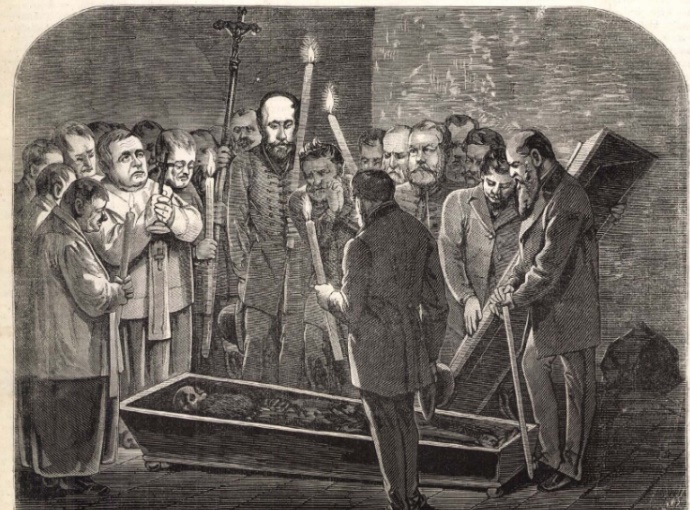
Identification of the corpse on 29 March 1870 (Source: Vasárnapi Ujság, 26 June 1870)
The Catholic Church was also cautious, as the archbishop of Esztergom, János Simor, was asked to perform the ceremony, but he had to travel to Rome at the time and appointed Bishop János Szabó in his place almost at the last minute. The burial was scheduled for 9 June, but the body had already been exhumed, identified, and locked in an ore coffin on 29 March.
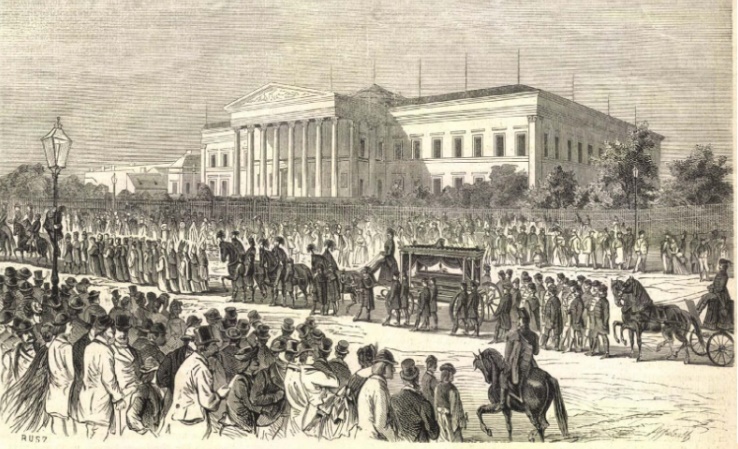
The funeral procession was detailed in the 26 June 1870 issue of the Sunday Newspaper
The crowd gathered for the 9 June ceremony was so large that Ferenc Deák could not get into the Franciscan church. To reach his reserved place, he could only enter the cemetery procession. The crowds reached 100-200 thousand people. The ceremony was attended by the entire government, the political elite, strictly as private individuals, representatives of industrial associations, various social organizations, the factories of Pest and Buda, the National Defense Association, and practically everyone.
The funeral was held with baroque splendour. The carriage carrying the coffin left for the Kerepesi cemetery after 4 p.m., where it arrived around 6 p.m. Jókai's paper, A Hon, reported on the new tomb as follows on 9 June 1870:
“In the cemetery, a cavity lined with red marble is ready to receive the ashes, above which will be raised a chapel designed by the organizing committee. This is where Batthyány's Carrara marble bust will be placed. The location of the tomb is the highest point in the cemetery, quite a separate place. From the main road, which leads in front of his cemetery chapel, a second branch road leads to the tomb, Lisznyay and Kisfaludy lie on the corner of the road.”
In addition to Bishop Szabó, the Franciscan chief Czirjék Piry gave a speech in the cemetery, which is a sharp reflection of the delicate political situation of the period. He described the execution of the prime minister as a sin of military power, i.e. Haynau was responsible, not the king, but Batthyány's goals were achieved with the compromise. The speech positioned the prime minister as a martyr but did not attack the existing order.
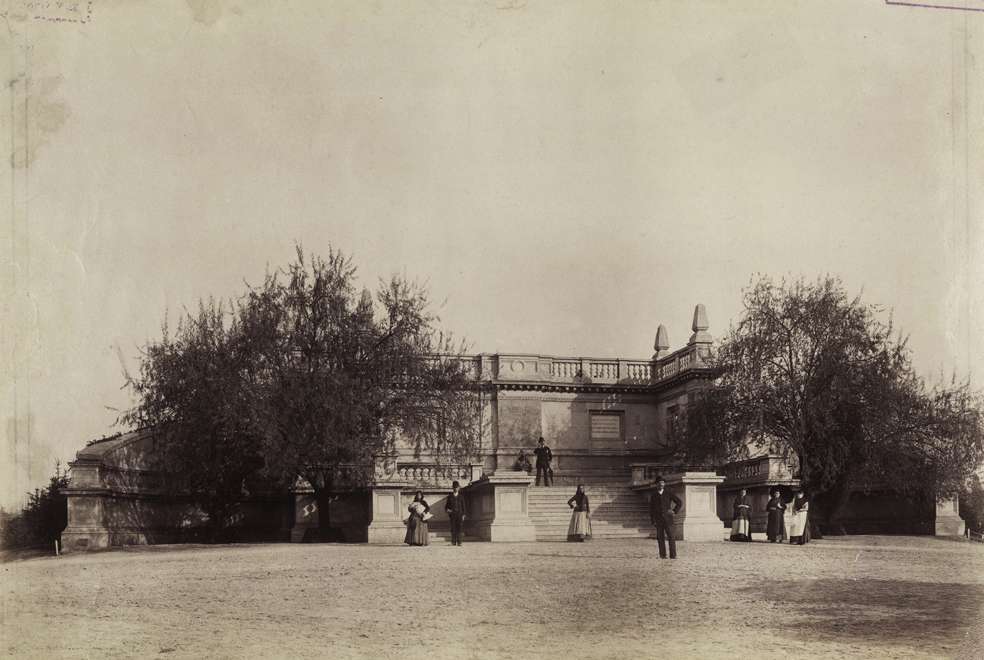
The monument, inaugurated in 1874, was photographed by György Klösz in 1890 (Photo: Fortepan / Budapest Capital Archives. Reference No.: HU.BFL.XV.19.d.1.07.014)
The mausoleum visible today was not yet finished. It was built in 1874 according to the plans of Albert Schickedanz. However, even then, on the day of the funeral, a candle appeared near the place of execution, on the wall of the New Building, which no one removed for a long time. It was not until 1926 that the final eternal flame was set ablaze at the site of the martyr Prime Minister's execution.
Cover photo: The execution of Lajos Batthyány (Source: Vasárnapi Ujság, 5 June 1870)

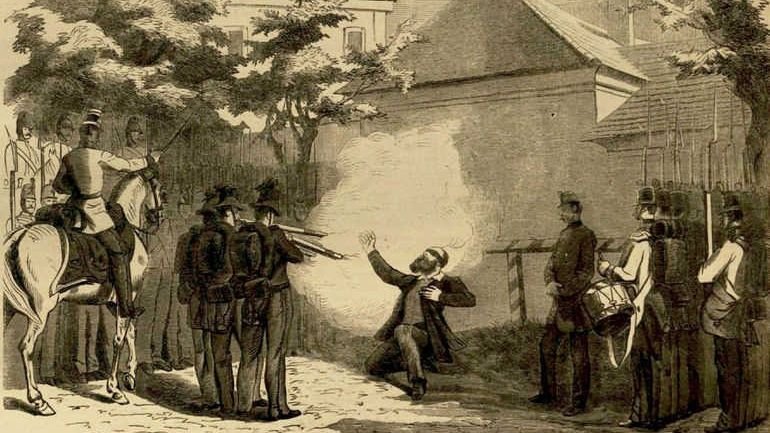



































Hozzászólások
Log in or register to comment!
Login Registration